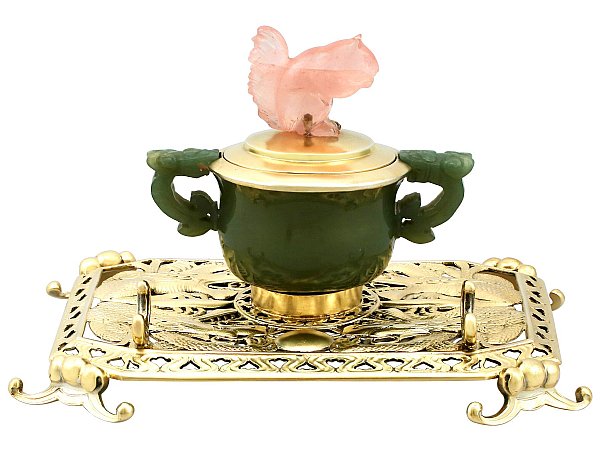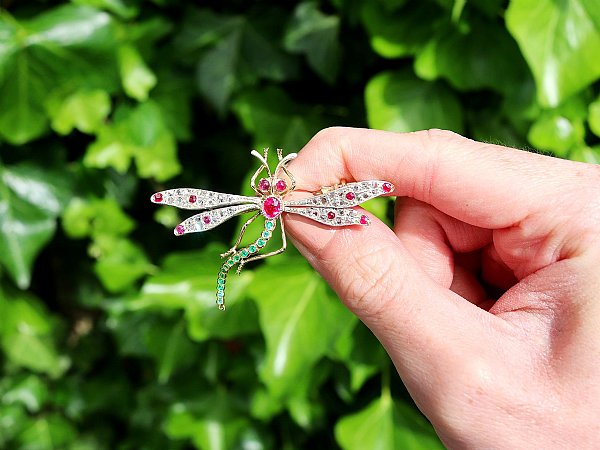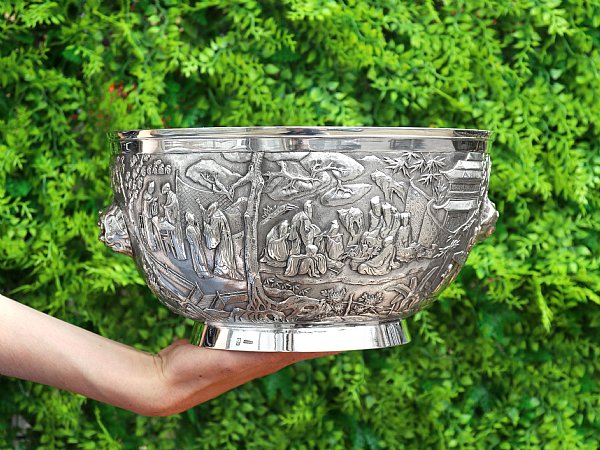Search Results for: '{{searchText}}'
Sorry...
We don't seem to have what you're looking for.
However we do have thousands of magnificent pieces of silver and jewellery available for you to view online. Browse our store using one of these categories.
Please wait for loading data... 
At AC Silver we are pleased to be able to offer our customers a range of antique silver inkwells and inkstands, ranging from those in charming novelty forms through to large treasury inkstands.
The impressive range of silver inkstands and wells cover examples from many periods including the Victorian and Edwardian eras.
Andrew Campbell hand picks all antique and vintage silverware in AC Silver’s inventory and will only add the finest examples of their type.
Inkstands and inkwells are highly collectable and make elegant gifts which can be displayed on an office desk.

The inkwell is a small jar, often made of glass, porcelain, silver, brass, or pewter, which contains ink for an artist or writer to dip their brush, quill or pen into. An inkwell usually has a lid to prevent evaporation and spillage, examples made specifically for travellers, were designed with air tight lids; these covers ensured the inkwell managed an arduous journey via horseback without leaking into the owner’s luggage.
An inkstand (or as they were known between the 15th and 18th Century - desk standish), is a stand or tray used to hold various writing instruments, often including a capped inkwell and a sand shaker for rapid drying. A pen wiper would often be featured and from the mid-nineteenth century a compartment for steel nibs was usually a component.
Although silver was the most popular material used for inkstands during the eighteenth century, inkstands were also fashioned from porcelain, pewter, or even lead; gold and silver examples were incredibly popular with those in high society. A standish often had a rectangular form supporting three or more pots for ink and one for cleaning purposes. To accommodate a quill, wells were often incorporated into the design of the stand.
Earliest forms of inkwells date back to the Ancient Egyptians, members of wealthy or upper-class families hired scribes to write for them.
These scribes began by using small ink palettes carved into pieces of stone with round hollows for each separate colour of ink. Over time, these palettes were developed into larger pieces of stone or clay, eventually becoming containers in which a stopper was added to protect and add to the longevity of the ink.
In Europe, prior to the sixteenth century, writing was considered to be a lowly task. Therefore, a scribe or scrivener would correspond using a quill pen and ink on behalf of the aristocracy. From the seventeenth century onwards however, inkwells and inkstands became more decorative and elaborate as the gentry began to undertake writing themselves, rather than feeling that this was a task exclusively suited for the lower classes.
As the art of writing spread across the world, animal horns began to be used as the material for making ink containers. To begin with, these inkwells were fairly basic and designed purely for practicality, with little ornamentation.
During the Middle Ages and Renaissance, decorative inkwells often crafted in gold or silver were introduced. Excessive ornamentation came into prominence with the baroque era, adhering to the fashion of most silverware, jewellery and clothing at this time.
At the advent of the American Civil war (1861-65) the portable inkwell was developed. This was for the benefit of soldiers, who could now correspond from the battlefield. This compact and portable design was also beneficial to affluent travellers; for their purposes, inkwells would be housed within boxes known as compendiums, which also held other writing equipment such as quills, ink, paste papers (used to seal letters) and a sander (to hold a fine sand, sprinkled to prevent ink smearing), medications and toiletries.
At the beginning of the nineteenth century, the Art Nouveau movement welcomed the use of elegant feminine shapes and flora and fauna across all mediums of art and design.
With the dawn of the Victorian era, novelty pieces from seaside towns became fashionable due to the advent of rail travel. Many dressing cases at this time were fitted with small silver travelling inkwells. Additionally, as the first flush of souvenirs became sought after home decor, the images of famous monuments or vistas were often crafted with enamel or etched into the glass inkwells, rendering them the perfect ornament.
Germany began to produce novelty inkwells in the 1990’s and they were then imported into Britain and specifically crafted for the UK market, and were mainly imported into Chester and Birmingham. Due to their novelty element these inkwells are often very popular with collectors.
The invention of the typewriter in the 1870s, along with the first fully functional and reliable fountain pen being patented by Lewis Waterman (1884), together spelled the demise of the inkwell. With increasingly practical fountain pens being produced in the twentieth century, the demand for inkwells fell to the point of obscurity, predominately being regarded as a rarity and owned by collectors. Inkstands however in recent times have enjoyed a revival in popularity. Their practical nature, fine designs and often exceptional craftsmanship ensure they are a timeless, decorative and functional addition to any modern day home.




